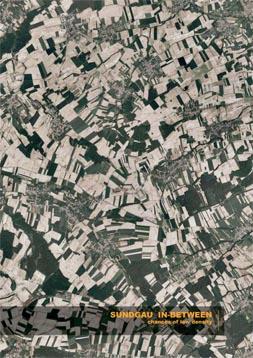Sundgau - Sundgau Inbetween - chances of low density

Students: Filip Pavel, Thomas Wölfel
Location: Group work in Basel
Date: January, 2007
Type: Research project, student work, three regions
Leaving Basel towards the West into France, one reaches a region which is dotted by a large number of apparently similar villages: Wahlbach, Zaessingue, Rantzwiller, Koetzingue, Magstatt-le-Base, Magstatt-le-Haut, Muespach, etc... The villages, lying in the region of Sundgau and within the administrative unit of arrondisement Altkirch, originally have had their economical base in agriculture, are characterized by a low density, each having only a few hundred inhabitants and all having developed along country roads, producing a network of homogenously laid out small scale rural settlements, covering an area of approximately 250 - 300 sq km, corresponding to an area eight times the size of Basel-Stadt.
How have those villages developed? In view of their apparent similarity, have they all been founded at the same time, according to the same principles and the same economical base? Do they share a common history, or are they distinct from each other, with only a perceived uniformity? Are they still grounded in agricultural activities, or has this been replaced by other economical patterns? Have they become the dormitories of Basel? Do they belong to the shrinking countryside regions, which is developing all over Europe, or are they in fact growing in size? What is their relationship to the main city of Basel? On the one hand, they form a rural suburbia to the core city, having a close proximity to the center. On the other hand, they hardly figure in the minds of the Basel population, with few economical, infrastructural or administrative ties existing between the two entities. Do villagers come to Basel for work and for shopping or leisure activities, or do they stay predominantly within their environment? Do Baslers go to the villages for excursions, or do they own holiday homes there?
The question of density is crucial to this region! Does this area, which could maybe be described as being sub-sub-urban, have to (d)evolve into a suburbanity, in order to still offer public services, transport and key facilities to the inhabitants? What forms of housing should be developed for this low-density area? How will the region as a whole, and some of the villages in particular, develop within the next 25 years? Can new developments in agriculture bring new potential to the area, or will it in fact bring doom to a region which is already struggling to keep on the winning side of globalization?
Download the Book PDF

